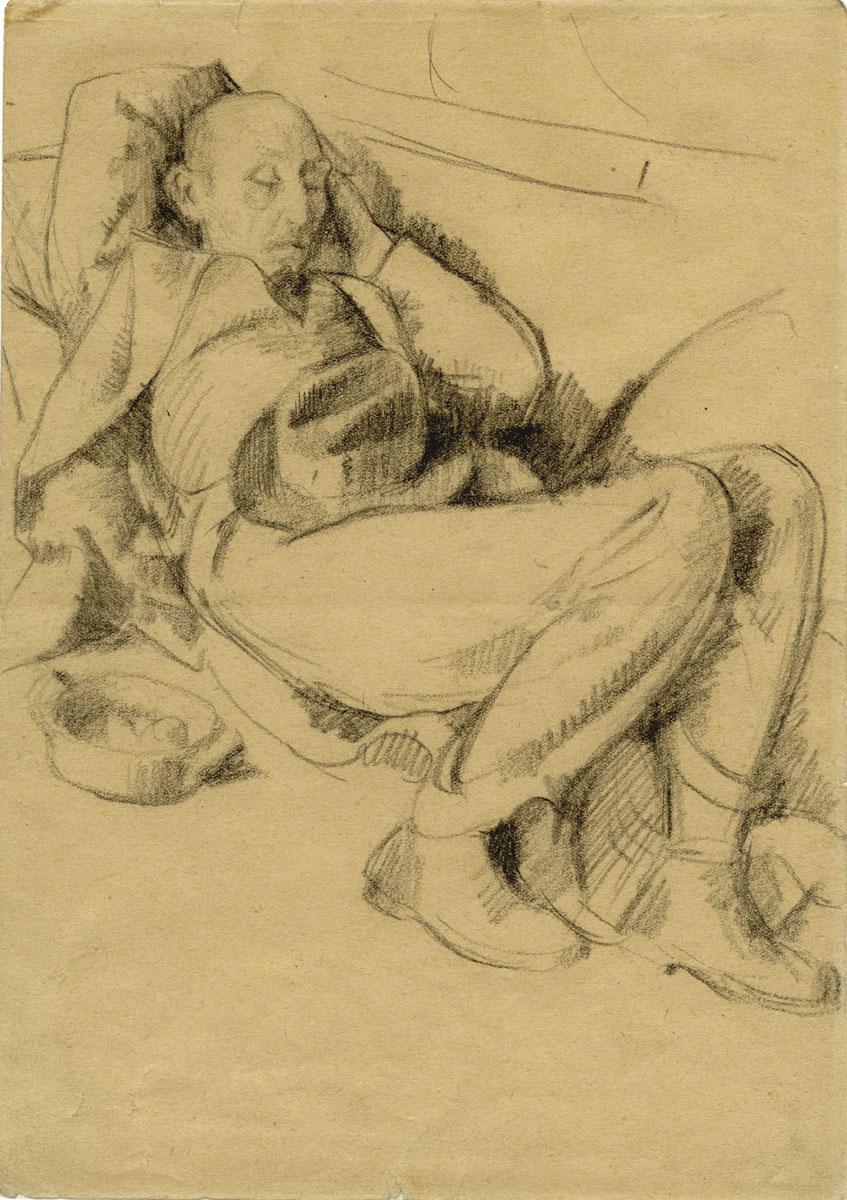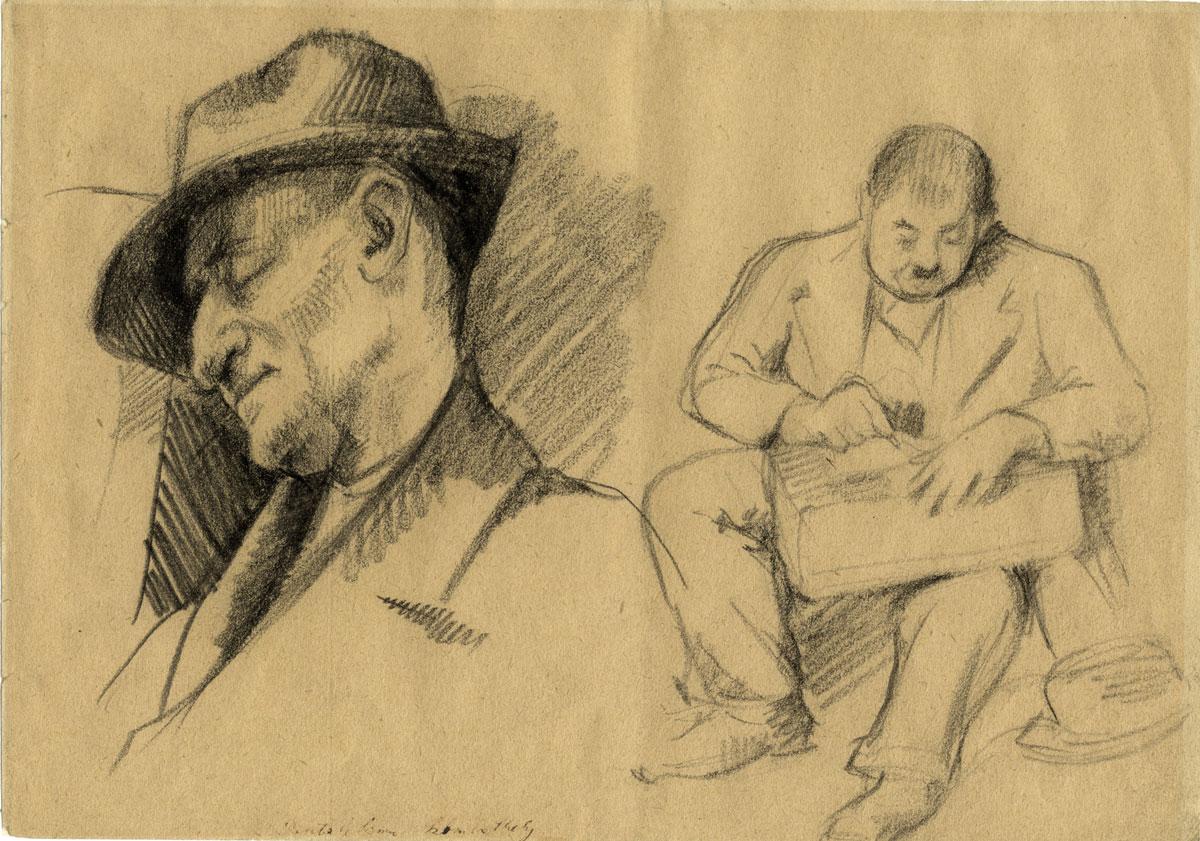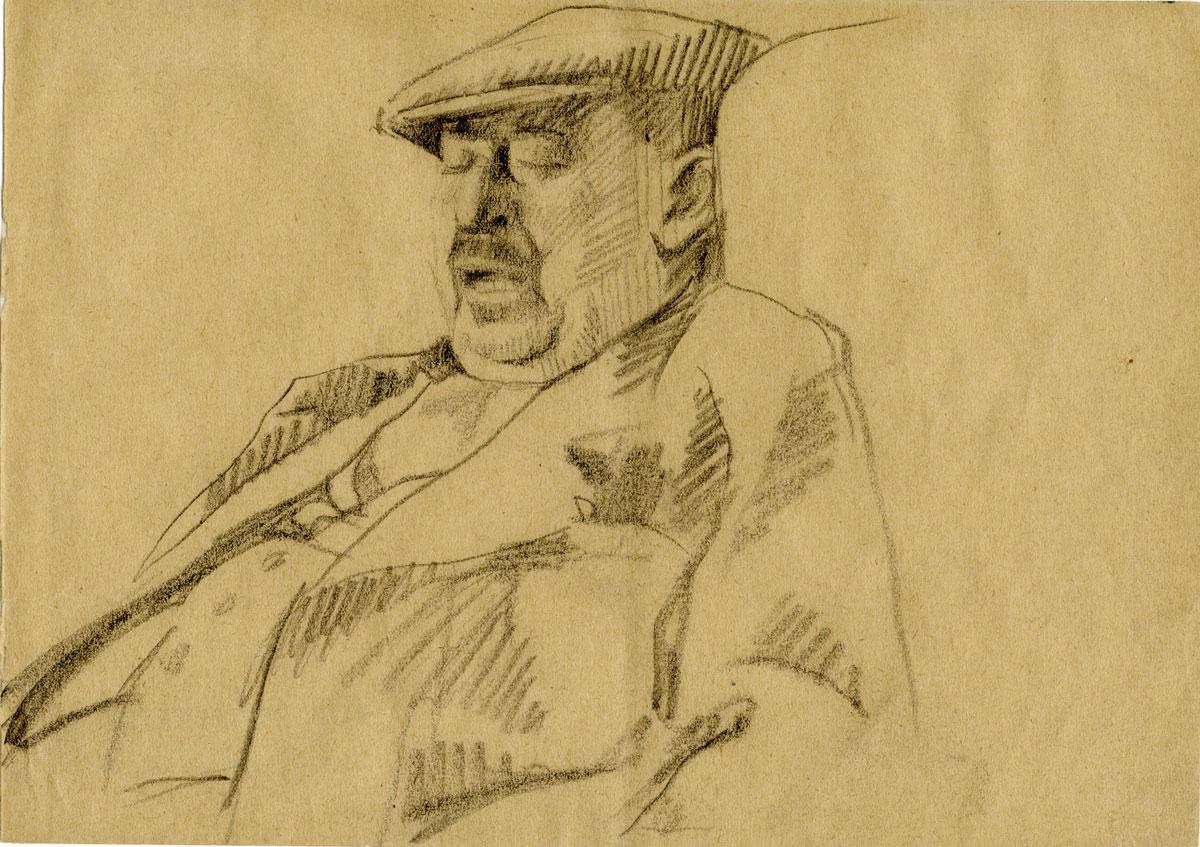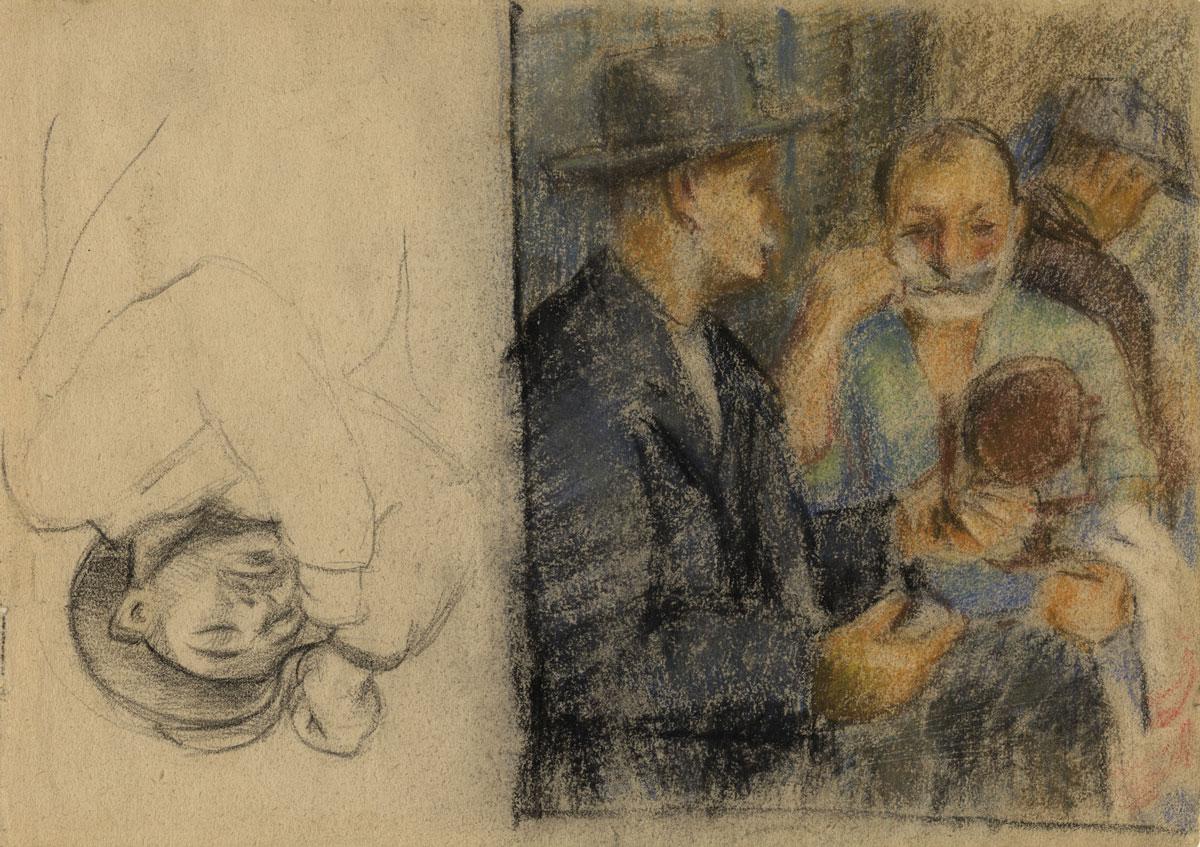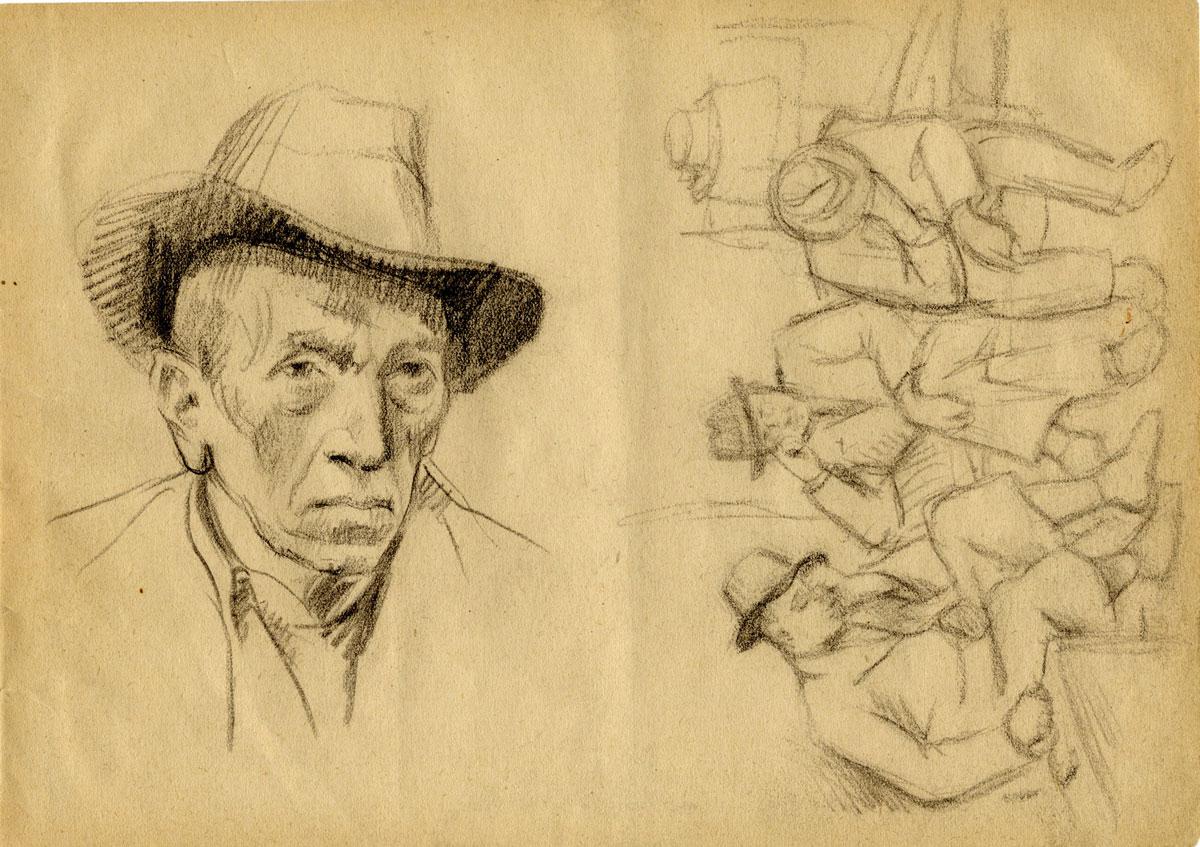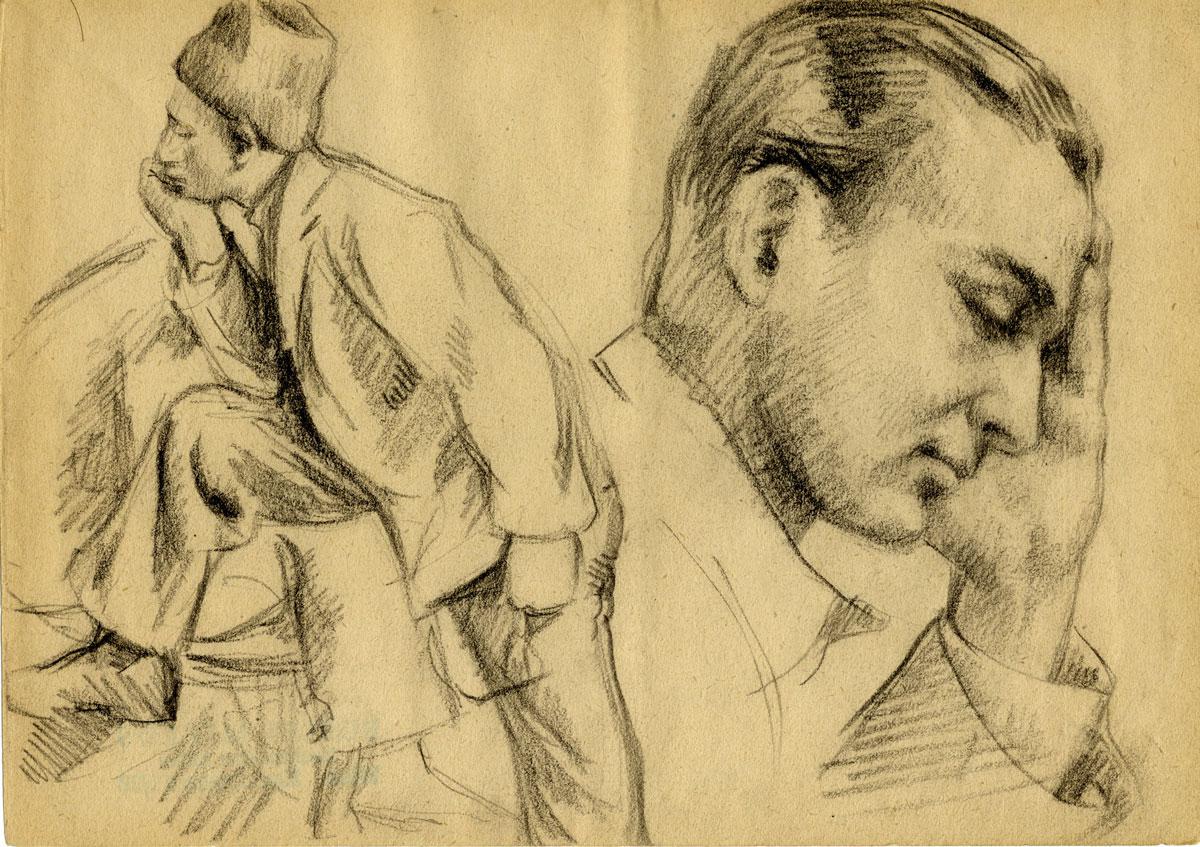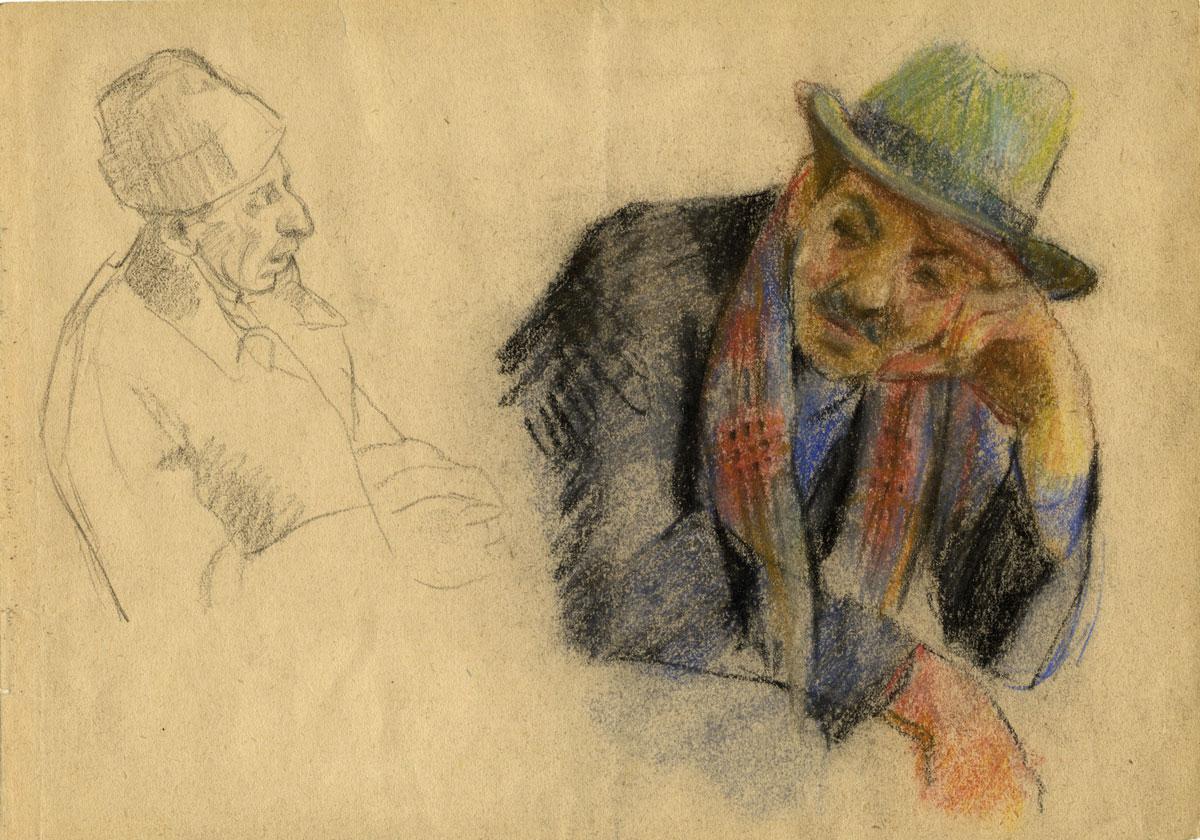Robert lost his hearing at the age of four as a result of scarlet fever. He completed his studies in furniture design and art at the Budapest Academy of Fine Arts. In 1939, his works were displayed in numerous exhibitions but, due to increasing antisemitism, they were subsequently removed.
Robert's sister and her husband escaped from Vienna after Kristallnacht, and after a period of wandering, in 1940 they found shelter with Robert, at his home in Budapest. In March 1943, Robert was arrested for hiding refugees and sentenced to forced labor but, through the intervention of his art teacher, Prof. István Szőnyi, he was released. Following the German occupation of Hungary in March 1944, Robert was arrested a second time and forced to complete the sentence he had previously received. He managed to escape from Obuda labor camp, with the help of the Red Cross, and joined the organization. He served as a courier for the Swiss Embassy in Budapest, and took advantage of his position in order to forge stamps and documents for Jews.
In March 1945, after the liberation, Robert returned to Ungvar to search for his family but discovered that only two nephews had survived, and that the rest of his family had been murdered at Auschwitz. Since Ungvar had been annexed by the USSR, Robert was prevented from leaving for 11 years, and exhibited his works in Soviet galleries. In September 1956, he finally obtained a visa to visit Budapest and from there, he escaped to Vienna. He married in 1962 and had four children. Robert was artistically active right up to his death.
While in jail in Budapest, in March 1944, Robert, using crayons, sketched the Jewish prisoners awaiting an unknown fate. The prisoners were drawn as he found them, unposed: dozing, in contemplation or introspection.
The artworks displayed in the exhibition are from a single 16-page sketchbook, from the Yad Vashem collection.
In the exhibition “Last Portrait: Painting for Posterity”, Yad Vashem continues in its persistent endeavor to restore a face and a name to the victims of the Holocaust and tell their personal story. Despite our efforts, some portraits remain unidentified. If you have additional information about the portraits and/or artists that are part of this exhibition, please contact the Yad Vashem Art Museum staff.
